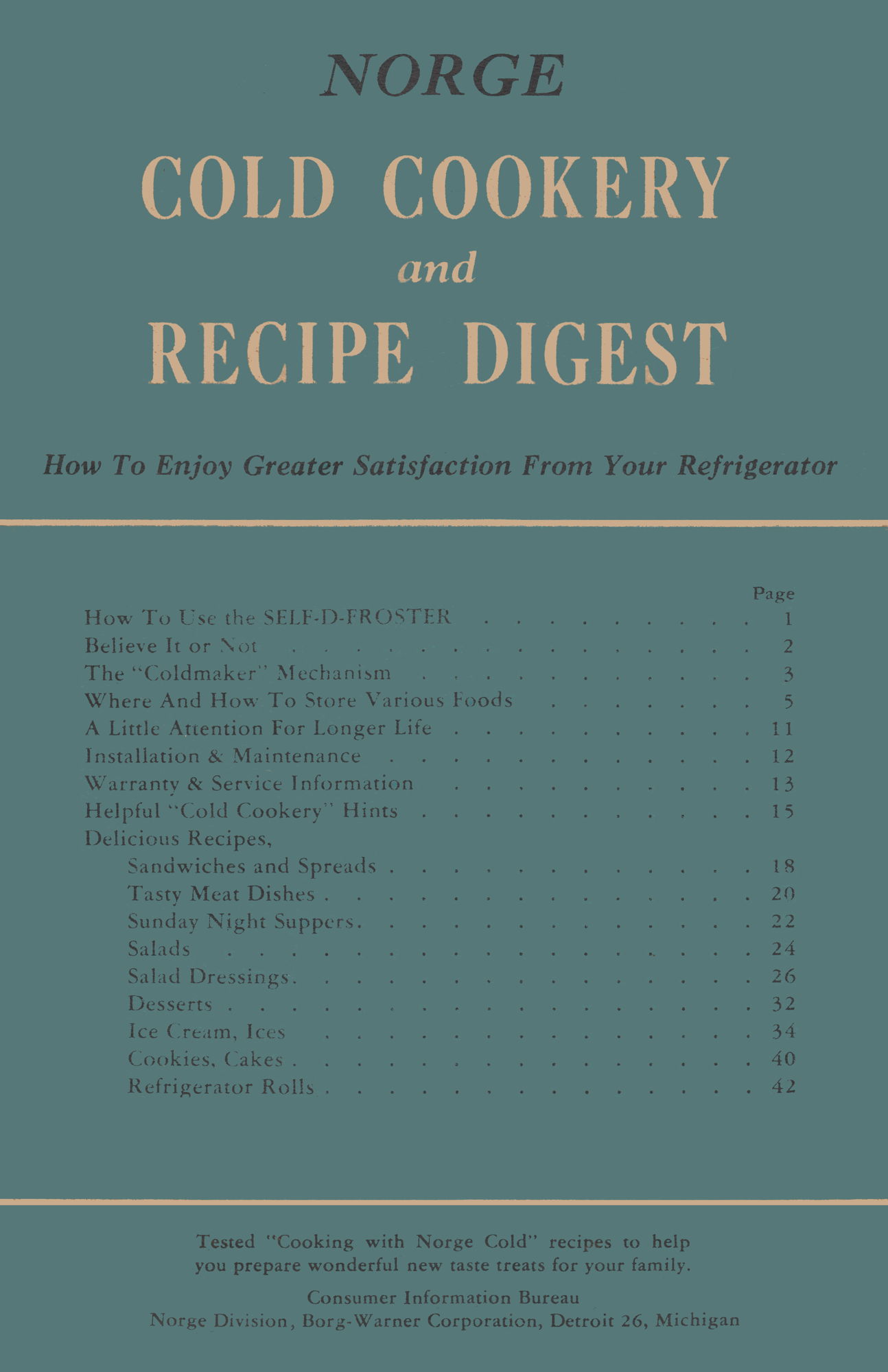Revolution: Home Refrigeration
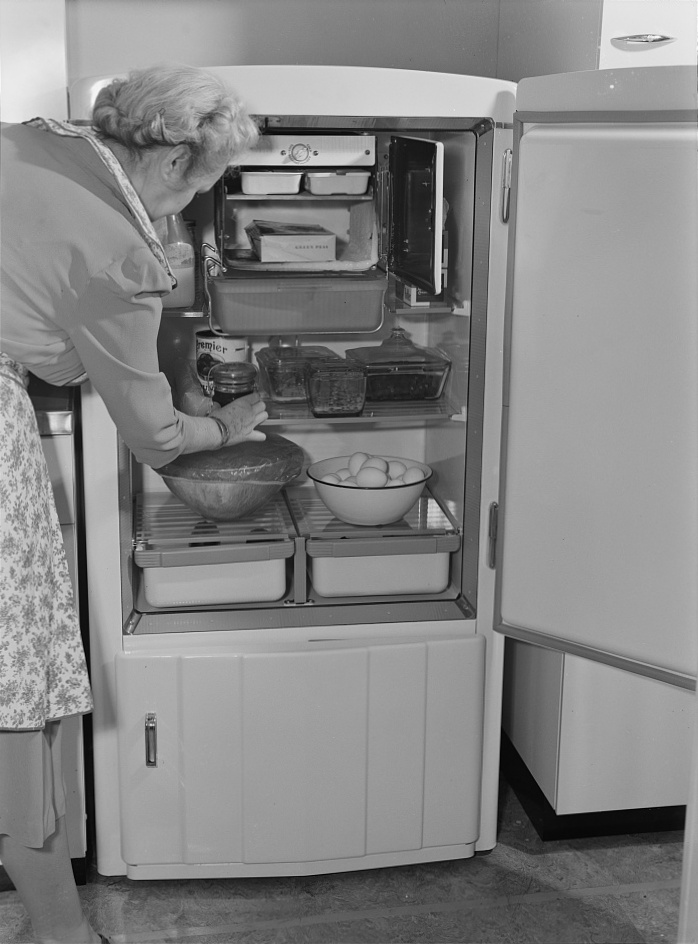
A well-ordered refrigerator is a boon to any home.
I write a lot on this blog about living through the home computer revolution. It was an amazing time and what happened during the late seventies and early eighties changed our lives in ways we can’t even imagine. It certainly changed my life when I chose to buy a computer at sixteen instead of a car. Even things that would have happened anyway happened far differently because of the personal computer. The Internet was already murkily envisioned before the personal computer, but it was a centralized resource that people would have to buy time on or even travel to in order to use.
A huge amount of what we use daily on the Internet today came from people working on personal computers in their offices and homes. It’s hard to imagine a web-based Internet like we have today without people like Tim Berners-Lee having a computer on their desktop that they could use to develop things like the first web browser and server. It’s hard to imagine an Internet like we have today without, first, computers on our desktops in our homes to access that Internet, and, now, computers in our pockets to access that Internet on a momentary whim.
But the personal computer is not the first or only amazing revolution we’ve lived through in the last hundred years. I also collect interesting old cookbooks. Not as many as a real collector but a lot more than the average weekend chef. Two of the books I’ve picked up recently are old refrigerator/freezer manuals. Judging from these manuals the home refrigerator was just as much of a revolution as the home computer.
In the oldest cookbook I own, the 1893 Charlotte Cook Book, there’s a (very good) mustard-flavored salad dressing that ends with a note about how well it keeps in hot weather:
Beat yolks of eight eggs, add to them a cup of sugar, one teaspoon each of salt, mustard and black pepper, and half a cup of cream; mix thoroughly. Bring to a boil a pint and a half of vinegar, add one cup of butter, let come to a boil, pour upon the mixture, stir well and when cold put into bottles, or put in a cold place. It will keep for weeks in the hottest weather and is excellent for cabbage or lettuce.
That it will keep for weeks in hot weather is important when you have no means of refrigeration—except a hole in the ground, or an icebox that is literally a box filled with slowly-melting ice!
If the 1942 Montgomery Ward Cold Cooking manual is to be believed, people initially treated the home refrigerator as a summer or warm weather appliance. They had an entire section for convincing people to “Use Summer and Winter”:
Use Summer and Winter
Use your MW refrigerator summer and winter. A refrigerator is an economy and help to you the year ’round and you will not be economizing by shutting it off in the winter. Milk and other perishable foods are classed as perishable because they cannot stand warm temperatures or prolonged changes in temperature. If you put perishable foodstuffs on the back porch or in the cellar they may freeze which will destroy flavor and then, too, you quite naturally wish to “save steps,” so the food will remain in the warm kitchen for long periods at a time. This not only means foods may spoil more rapidly but salad greens will wilt and the outside leaves (containing the most vitamins) thrown away—other vegetables will shrivel and lose flavor—milk or creamed foods may sour or develop a distasteful flavor—meats may spoil. Remember the cost of one spoiled roast will probably pay for a month of running costs, for the cost of operation of the MW refrigerator is very small. So, place your refrigerator where it is easily accessible and use it constantly.
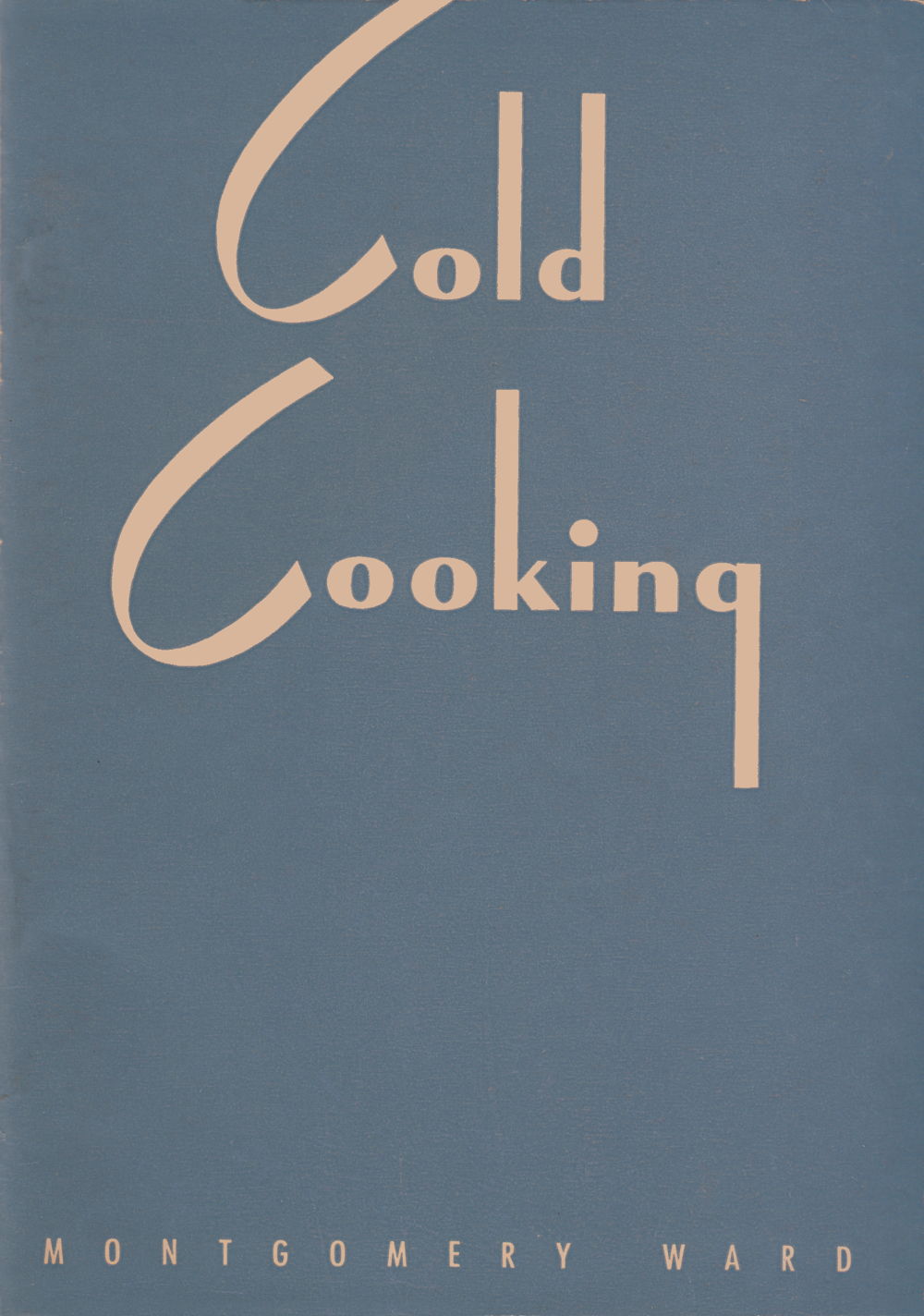
This 1942 manual and recipe book admonished owners not to shut their refrigerators off in the winter.
I suspect that it wasn’t just a matter of trying to cut costs by turning the refrigerator off, but also of not trusting electricity’s reliability. It took time to build people’s trust that electricity was going to stay on 100% of the time, rain or shine, whatever the weather. Until they had that trust, they’d continue using mother nature as their refrigerator, risking the dangers of contaminated food from predictable seasonal temperature changes rather than unpredictable power outages.
According to the Big Chill web site, by 1944 85% of American households had a refrigerator. Like home computers, home refrigeration spread very quickly. By the time of the circa 1946 Norge Cold Cookery manual, there was no need to convince people to use the refrigerator year-round.
The advent of reliable refrigeration is just barely in the memory of people alive today. When I posted my review of Cold Cooking and its admonition to keep the refrigerator turned on during the winter, I got people commenting about how their parents and aunts and uncles would reminisce about when they got their first refrigerator and freezer. It was a memorable event.
Few modern technologies have done more to make life better and daily life more different than the home refrigerator/freezer. It’s a relatively new innovation—it was introduced in either the thirties or forties, depending on whether you count the ice cube tray or the fully functional food freezer compartment as the starting point.
Before the home refrigerator/freezer, the only reliable refrigeration and freezing was for commercial use. If you wanted frozen confections or cold drinks it meant going to a bar, a soda shop, or a movie theater, or some other central gathering point.
After the home refrigerator, your backyard garden party could be a soda fountain. Your kids playing in the backyard could have lemonade on ice. Husband and wife, and perhaps a neighbor or two, could relax after work with an iced tea or a cold cocktail. It changed completely the way we eat and the way we socialize.
Reading old novels from the twenties and thirties, going out to get ice cream was a special occasion.1 With a home freezer, you could now not just keep ice cream in your freezer, you could make ice cream in your freezer. These two manuals are filled with great recipes for frozen confections of various kinds, including ice cream and things that are a lot like ice cream.2
Ice cream recipes in the books I’ve seen from before the home refrigerator always use a hand-cranked contraption that involves a paddle and an outer salted ice container. Come the forties and fifties, most recipes just say, put the syrup in the freezer. Maybe stir once, maybe not, depending on the recipe. Then, in the seventies, the now “old-fashioned” ice cream freezer came back into style.
But ice cream isn’t the only thing that home refrigeration made possible. I made fun, in my review of these two cookbooks, of the idea that mixing fruit juice, sugar, and water and sticking it in the refrigerator was a “refrigerator recipe”. But in fact that must have been pretty amazing. The ability to get ice cubes any time must have been incredible the first time someone just reached into their new refrigerator and broke open an ice cube tray to share cold drinks with friends and family. Nowadays we don’t even have to do that: most refrigerators keep a store of ice cubes on hand ready to dispense.
Again, going back to old novels, when someone brings out a glass of lemonade and ice cubes you can tell that its a special gesture, a joyous gesture. Someone has just accomplished something, or someone wants to show how they care, or, often, both. It’s something we take for granted, but for them it was a celebration.
The home freezer allowed time-shifting not just of food—iced desserts no longer had to be eaten when they were made—but of the seasons themselves. Dishes could be made with fresh fruits or vegetables in season, and frozen for deep winter or next spring. Kids in novels would store up winter snowballs for summer surprises.
My grandfather used to talk about working in an ice distribution center as a teen. It was a laborious process, hauling huge blocks of ice out of an ice warehouse and dropping it off at subscribers’ homes. Water is heavy and frozen water is cold and heavy. Harvesting ice from rivers and lakes was a dangerous job. All that effort, annoyance, danger, and cost was no longer necessary when every home had a personal refrigerator and freezer.
None of these improvements would have been possible without the work of early power companies who spread electricity throughout the United States and into rural areas•. The availability of ubiquitous and reliable energy is necessary for home refrigeration and especially home freezing. If once every decade you end up having to throw a big party and empty out your refrigerator, that can be fun. But if it starts becoming a yearly, monthly, or even weekly occurrence, that’s a different story. The refrigerator becomes no better than an icebox from a hundred years ago. Probably worse, because of its likely location in a warm spot of your home.
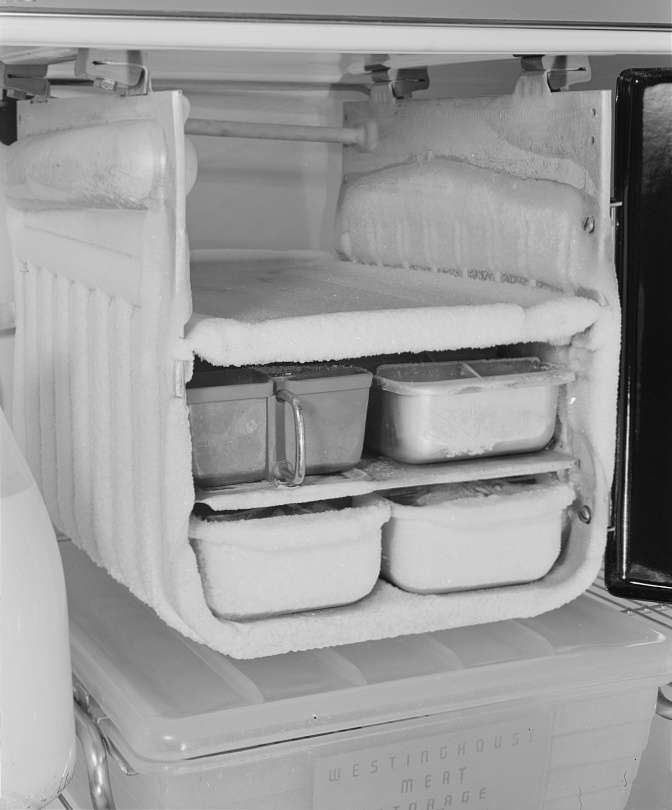
In less than a decade, we went from ice as a precious resource to ice as a nuisance that must be disposed of regularly.
You’re going to go back to putting your food in a hole in the ground or under the snow, risking your family’s health.
This is what reliable power is about. When advocates of unreliable energy talk about Americans learning how to live without, when they demand that we replace reliable power with unreliable power, power that doesn’t work at night or when the wind dies down, this is what they’re talking about. They’re talking about regressing to a hundred years ago when we didn’t have reliable refrigeration, let alone the modern Internet, modern cars, and modern handheld communications.
A time when we can no longer plan ahead, keeping sale meats frozen or making tomorrow’s lunch today.
A time when sale meats are more likely to be the result of yesterday’s power outage rather than an attempt to entice you into the grocery store.
Reliable refrigeration does not exist in most places of the world. They may have refrigerators, but they can’t count on them, because they can’t count on electricity. When you can no longer count on electricity, when brownouts and rolling blackouts mean your refrigerator is not always on, all of the last century’s progress goes away.
Converting reliable energy to unreliable energy returns us that much closer to a life that is nasty, brutish, and short. When they say that Americans must learn to do without, they mean without life and without civilization.
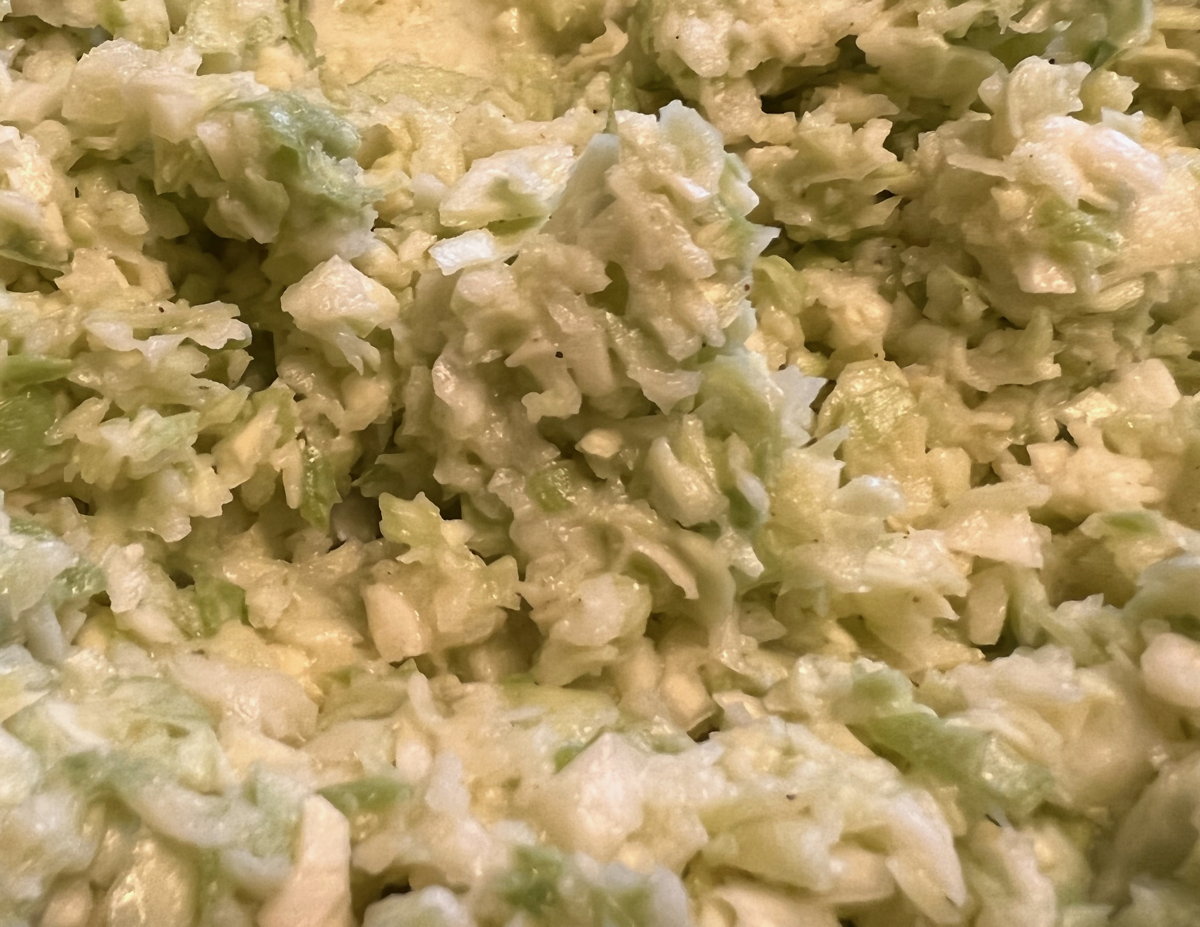
Mustard Dressing
Servings: 16
Preparation Time: 15 minutes
Mrs. J.R. Baughman
Review: The Charlotte Cook Book (Jerry@Goodreads)
Ingredients
- 2 egg yolks
- 2 tbsp cream
- ¼ cup sugar
- ¼ tsp salt
- ¼ tsp dry mustard
- ¼ tsp pepper
- ¾ cup vinegar
- ¼ cup butter
Steps
- Beat the egg yolks.
- Add the cream, sugar, salt, mustard, pepper, and mix thoroughly.
- Bring the vinegar and butter to a boil.
- Stir boiling mixture into egg mixture, stirring constantly.
- Cool, and store in a glass jar in the refrigerator.
- December 27, 2023: Refrigerator Revolution Revisited: 1928 Frigidaire
-
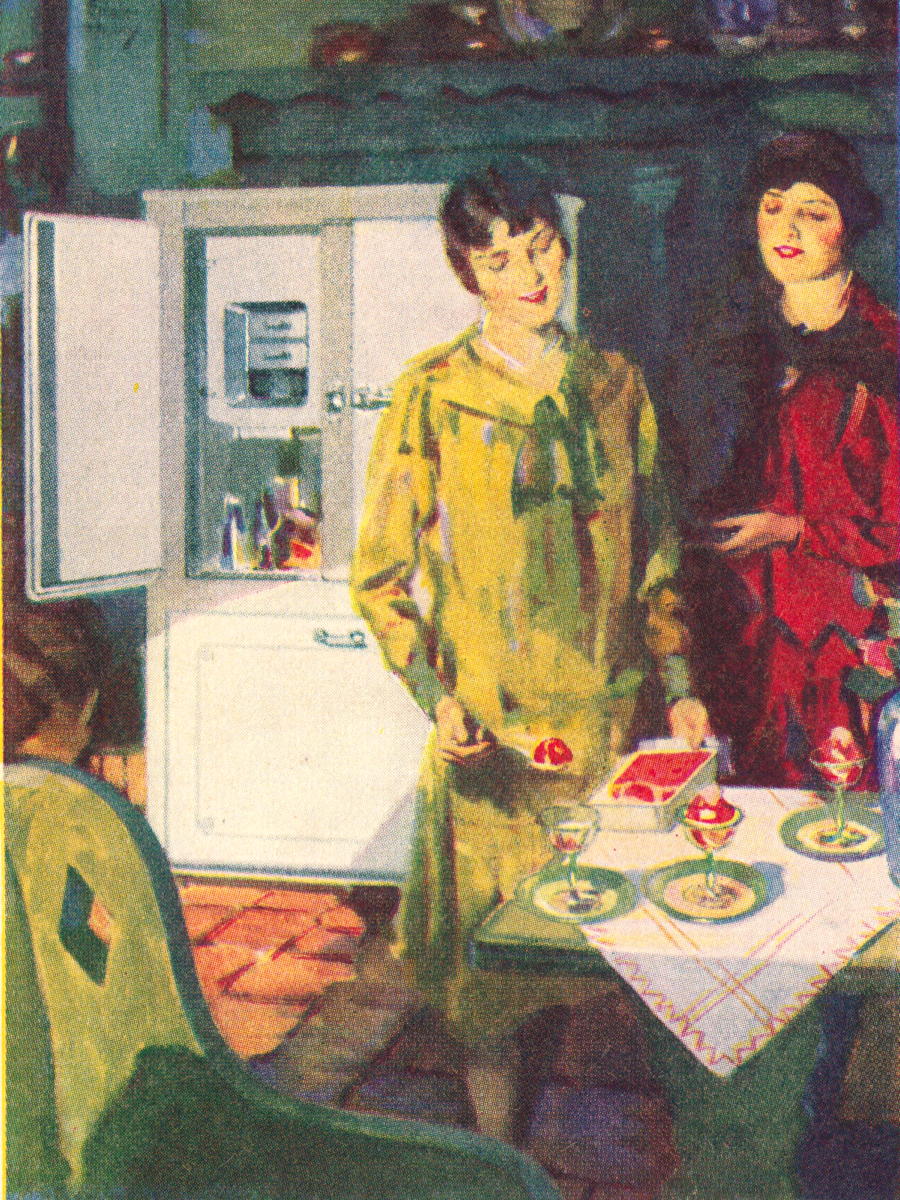
Enjoying the fruits of their Frigidaire.
Since writing Refrigerator Revolution I’ve picked up two other refrigerator cookbook/manuals, and I’ve written a script to scan cookbooks into PDFs. So besides covering three refrigerator manuals (1928, 1942, and 1947) in this series, I’ll also provide searchable downloads of them, so that you can see my sources for yourself.
- Frigidaire, 1928
- Cold Cooking, 1942
- Norge Cold Cookery, 1947
The oldest refrigerator manual in my collection, and the inspiration for this series, is the 1928 Frigidaire Recipes (PDF File, 15.5 MB). Like all three of these books, It’s both a manual and a recipe collection. It goes over the basic functions of the refrigerator, such as its dial for adjusting how quickly things freeze and how to defrost.
The Frigidaire book’s subtitle was “Prepared especially for Frigidaire Automatic Refrigerators equipped with the Frigidaire Cold Control.” That’s a very dry description of something you had to see to believe:
The primary purpose of Frigidaire Automatic Refrigeration is to preserve food. In this capacity it is today preventing needless food spoilage and safeguarding health in hundreds of thousands of homes throughout the world. But there are many other services which Frigidaire offers.
The delicious frozen desserts and salads which may be prepared with the aid of Frigidaire, represent an entirely new application of the household refrigerator. To understand thoroughly how easily these frozen dishes may be prepared is to value Frigidaire above all other household utilities.
The language reminds me of early home computer manuals, promising a revolutionary appliance that will change the way you live. Like Andy Hertzfeld in Revolution in The Valley, the refrigerator is referred to as a subject without an article. Frigidaire, like Macintosh, is a person, not a thing.
Ray Bradbury evokes this magical feeling in several of his stories about small-town America meeting wonderful and terrifying things.
↑I thought about including some recipes in this post, but the post is long enough already. I’ll have a separate post later with several ice cream recipes using eggs, egg yolks, egg whites, and no eggs at all.
↑
cookbooks
- The Charlotte Cook Book at Feeding Michigan (PDF)
-
 “A selection of tested recipes” from the First Congregational Church of Charlotte, Michigan, 1893.
“A selection of tested recipes” from the First Congregational Church of Charlotte, Michigan, 1893.
- Ice cream from your home freezer
- You can make great ice cream with whole eggs, egg yolks, and egg whites. You can even make it without eggs at all. All you need is syrup and cream—and a refrigerator with a freezer or a standalone home freezer.
- Review: Cold Cooking: Jerry Stratton at Jerry@Goodreads
- This 1942 Montgomery Ward cookbook not only tries to convince you to buy a refrigerator, but to use it year-round. Ice creams are one of the best way to do that.
- Review: Norge Cold Cookery: Jerry Stratton at Jerry@Goodreads
- Recipes from 1947 designed to convince you to buy the Norge refrigerator. Some of them definitely would.
- Review: The Charlotte Cook Book: Jerry Stratton at Jerry@Goodreads
- This 1893 community cook book is a fascinating look at cooking and baking before much of the technology we now rely on, such as refrigeration.
history
- The Forgotten Man: A New History of the Great Depression•: Amity Shlaes (paperback)
- “Amity Shlaes offers a striking reinterpretation of the Great Depression. She traces the mounting agony of the New Dealers and the moving stories of individual citizens who through their brave perseverance helped establish the steadfast character we recognize as American today.”
- Refrigerators Through the Decades
- “If you’ve ever been without power in your house, you know just how suddenly keeping the food in the refrigerator cold becomes a necessity. Can you imagine living in a time before refrigerators? Warm summer months meant that families would gamble with safe food consumption, and any families living in poverty were rarely able to afford ice.”
- Review: Man and the Computer: Jerry Stratton at Jerry@Goodreads
- Man is in a symbiotic relationship with the computer; that the computer is not alive doesn’t matter. The distinction between living and inanimate matter is unimportant because of the features of this symbiosis.
More ice
- The domestication of frozen water
- Even the poorest people have ice today. Ice is given away free to dilute already-cheap sugary drinks. You can buy it in huge bags outside at gas stations and convenience stores, and when it melts you can get some more. In medieval times, you had no such luxury. Ice came in the winter and left in the summer. Storing it was time-consuming, expensive, and even dangerous.
More refrigerators
- Refrigerator Revolution Revisited: 1928 Frigidaire
- The 1928 manual and cookbook, Frigidaire Recipes, assumes a lot about then-modern society that could not have been assumed a few decades earlier.
- Ice cream from your home freezer
- You can make great ice cream with whole eggs, egg yolks, and egg whites. You can even make it without eggs at all. All you need is syrup and cream—and a refrigerator with a freezer or a standalone home freezer.
More technology changing society
- Future Snark
- Why does the past get the future wrong? More specifically, why do expert predictions always seem to be “hand your lives over to technocrats or we’ll all die?”
- The lost tradition of unannounced visits
- Once upon a time, if you were in the area of a friend, and you had extra time, you’d just drop in for a visit. You wouldn’t call first—phone calls were expensive. You wouldn’t text—there were no texts. You’d just show up. And you’d be even more likely to do this on holidays.
- To the ends of the earth
- Why don’t we see any evidence of extraterrestrial intelligence? And will we survive long enough to make ourselves known to the universe?
- Cell phones: threat to public safety
- Cell phones are a part of the decentralization of our society; they are a severe threat to those who prefer centralization and restricted channels of access.
- iPods and the future of social interaction
- The iPod--as part of the decentralization of media control--allows us to carve our own spaces, rather than having the “crass commercialization of public space” force us into marketing spaces of someone else’s design.

